Blog Background:
According to Philly's feedback about our submission one, we tend to reflect our initial ideas and concepts and analyze other installation projects, in order to have a deeper understanding of wider context. In addition, after discussion, our group is divided into two sub groups for further research and clear division of labor. Rudan and Jin are responsible for more detailed Arduino coding and installation creating process. Jalea and Yuan are in charge of music generation with MAX. In this blog, I (Jin) and Rudan would make a reflection on our submission one based on our research on other installations with Arduino and lights.
Project One: “Plant Sensory Visualization
【Notes: On the rational integration of installation design and theme】
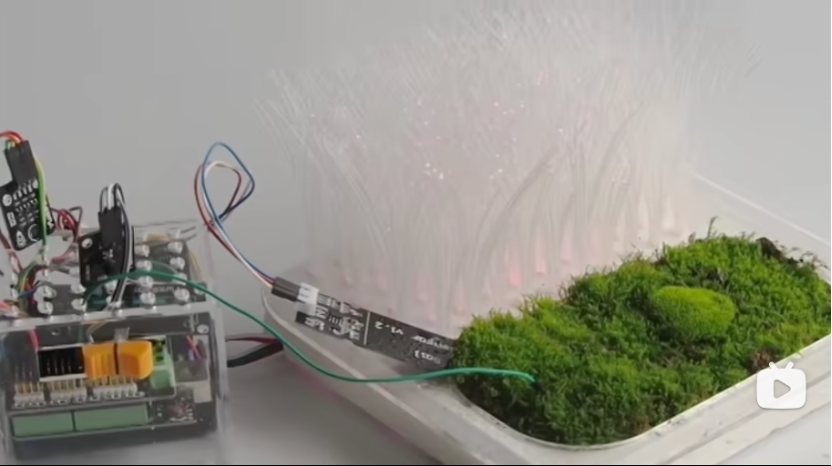
Case concept introduction:
Plants are often overlooked, but they live in symbiosis with us. They collect invisible information about nature and express it through their own state – the color of their leaves is richly colored, their form is uplifted or drooping – and they are the most important part of our lives.
This project aims to explore the possibilities of human-plant interaction by ‘touching’ plants through art installations and ‘observing’ their data – light, water, and emotion. This will help people to understand what plants know and feel, and to deepen their connection with them.
【Notes: There is a certain similarity to our concept. The design uses the Arduino and the installation to show the life of a plant, and our design uses water to show the life of a person. Through this design, I thought about the possibility of using devices to complement the concept of ‘human life’.】
Studyable component:
- The way in which touch sensors and humidity sensors pick up data and import it into the device (data transfer from the device via Arduino only).
- The way in which the plant state is represented figuratively.
- The way in which the device interacts with people.
Arduino:
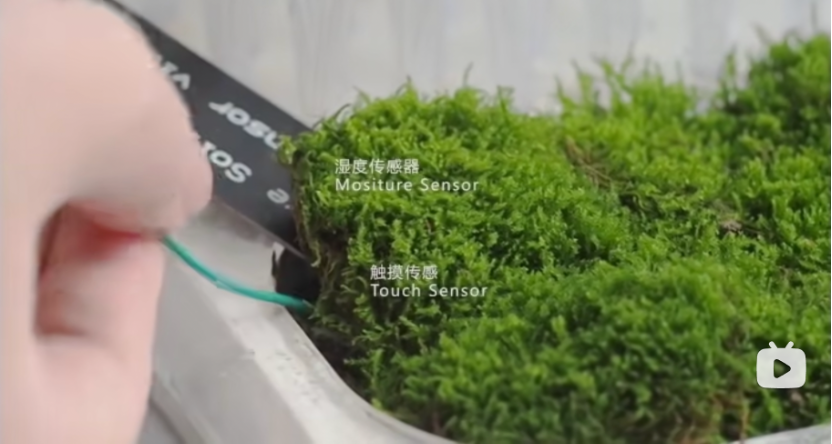

The installation is divided into two parts: the moss and the device (blue optical fiber). The moisture sensor is used to obtain soil moisture data, which is fed into the Arduino, and the blue light dot on the optical fiber increases. In this way, the moisture of the soil is visualized.
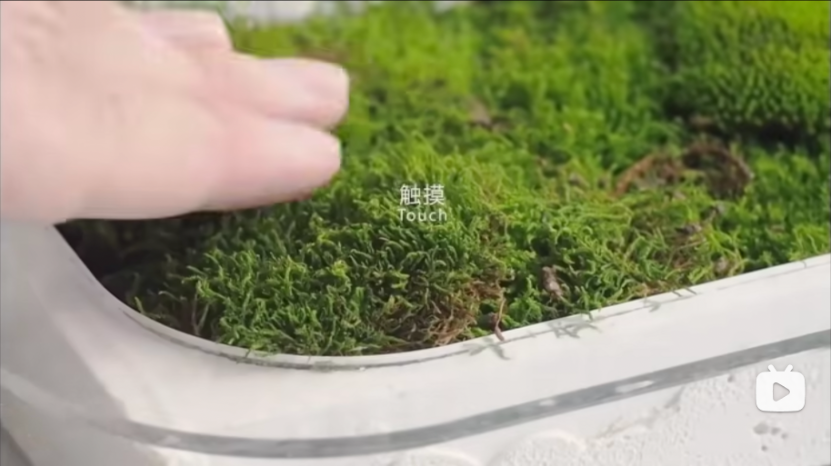
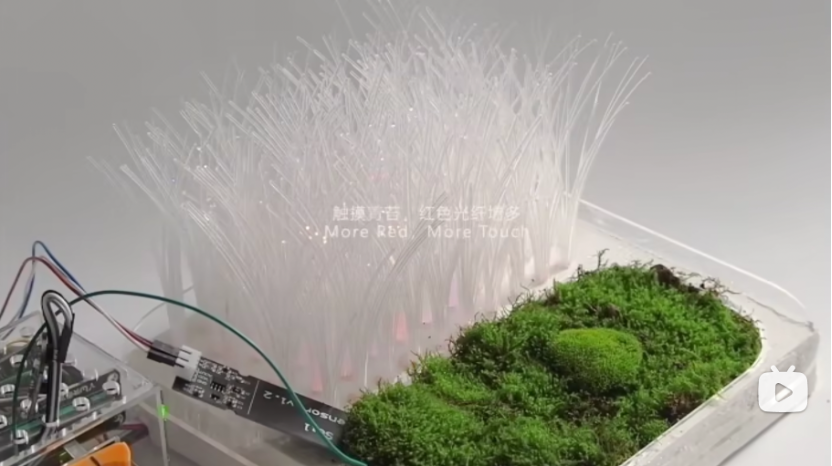
By means of a touch sensor, the red light spots on the optical fibers increase when a person touches the moss.
【Notes: The installation visualizes the state of the plant in a fiber-optic variation. In our design, the concept of the ‘human life cycle’ was intended to be presented through the changing projection of water on the wall, but this did not seem to be a direct way of making the viewer appreciate our intentions. We thought about the possibility of using some sensors to make the projection of the water change and at the same time make the wall appear to represent the stages of a person’s life (child, middle-aged, elderly).】
Project Two: “Mirror World
【Notes: On the use of the sense of fragmentation in the expression of meaning.】
Case concept introduction:
The materials are mirrors, acrylic panels, acrylic columns, UV adhesive, and the model is purely handmade. A visual art display combined with the materials.
【Notes: The sound and nature of the material can be used wisely to achieve unexpected visual effects.】
Studyable component:
- Visual effects.
- Sound effects.
【Notes: Consider whether the sounds and effects of the material can be used to further highlight the changing ‘stages of life’.】
– Thinking about the development –
- Using the principle of pin-hole image, the projection of ‘a life of a human’ on the wall will change.

For example, in our design we use wall projections to present the three stages of a person’s life, i.e. in the first stage, the projection of a child appears on the wall and the colorful ripples produced by the water surface are reflected in the child’s projection; in the second stage, the projection switches to a middle-aged person and the colorful ripples reflected in the middle-aged person’s projection change; in the third stage, the projection switches to an elderly person and the ripples change with the music.

(This image was drawn by Rudan Zheng)
- Transformation of pictures in small-aperture imaging using the kaleidoscope principle, achieved with a mechanical gear mechanism.
Conception: the weight of the water is sensed by a pressure sensor and the rotation of the gear is controlled by the change in weight (the fall of the steel ball). The picture of the small hole imaged is bound to the gear and changes when the mechanical gear undergoes rotation. Case reference:

- Combine fragments of highly reflective materials such as broken mirrors and glass with the reflection of light to make it more complex and achieve a more striking visual effect.
- Consider incorporating the sound of breaking mirrors and glass into the soundtrack of the ‘middle age’ stage to convey the idea that life is not always easy.
– Arduino (distance sensor coding)-
CS:
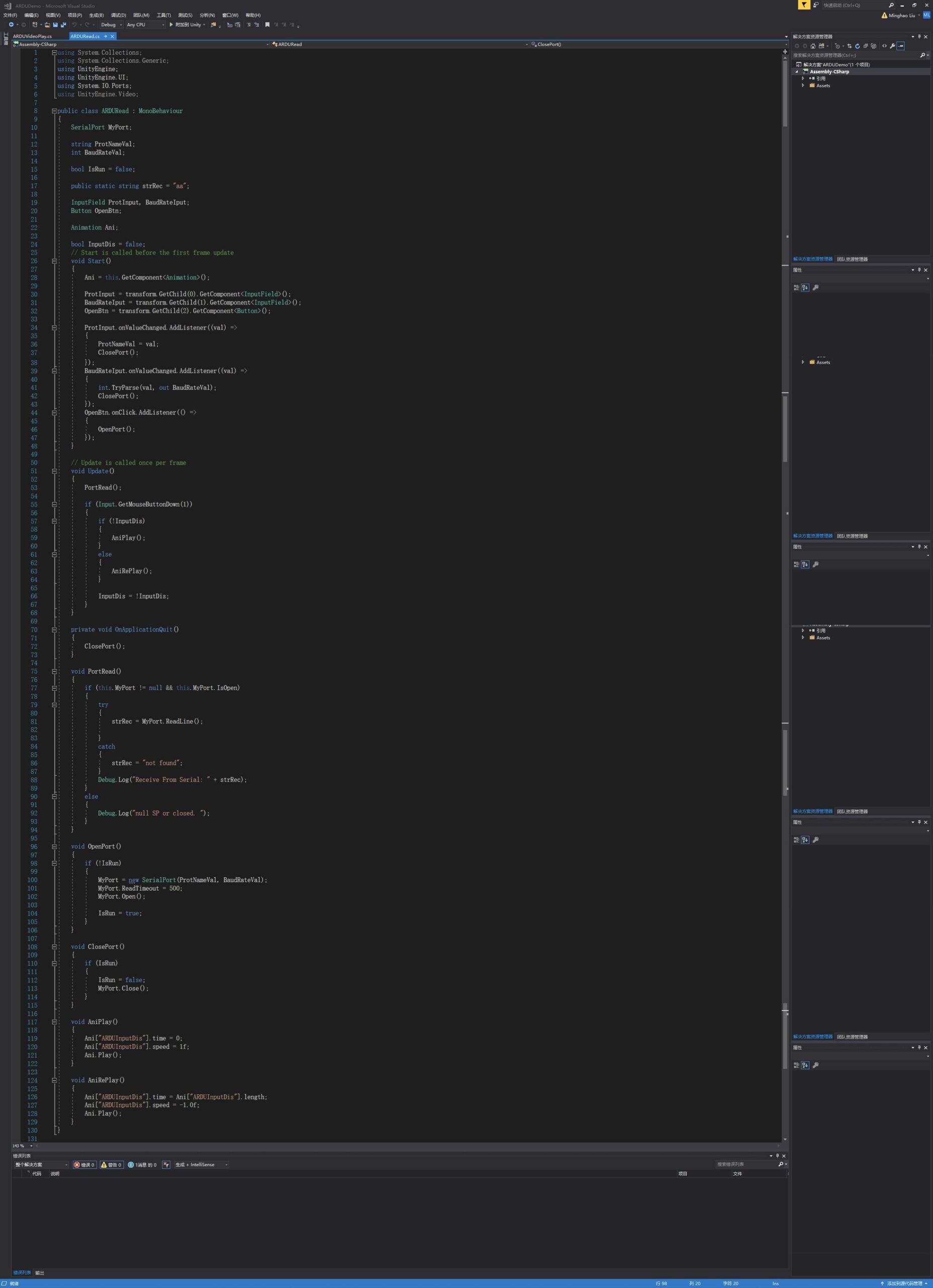
Arduino:


